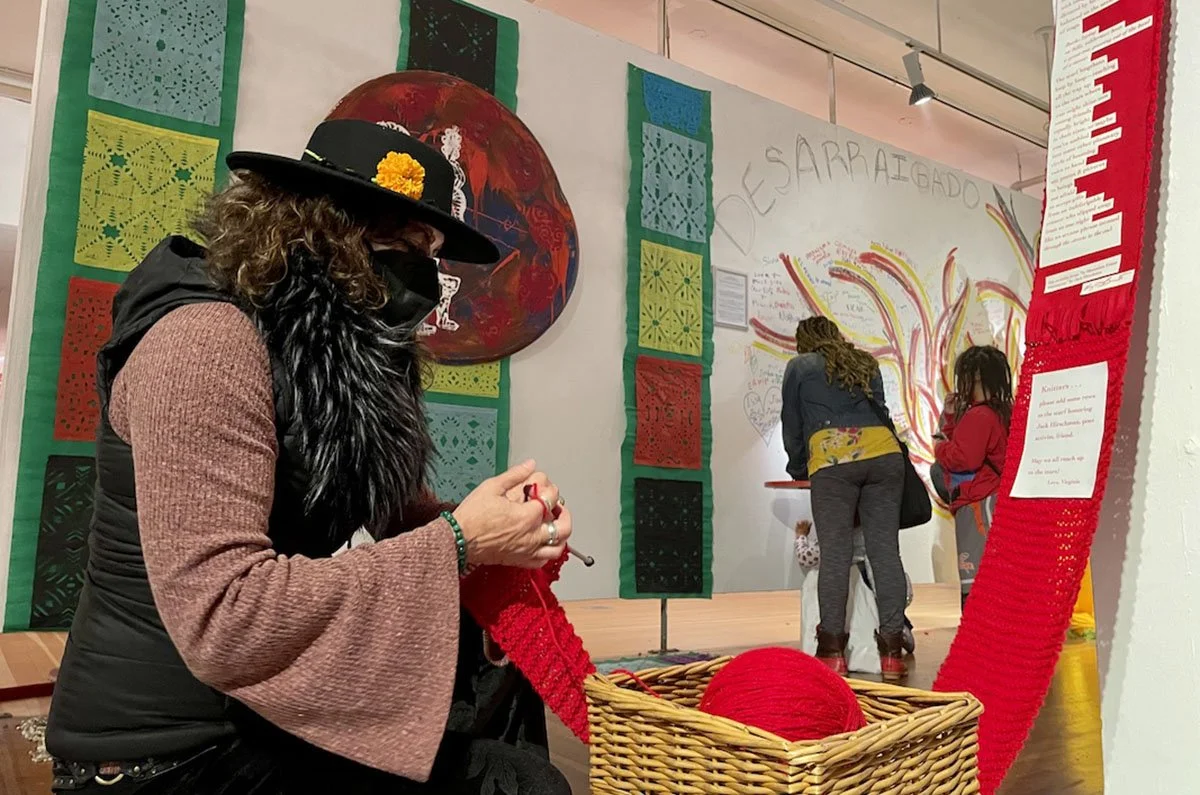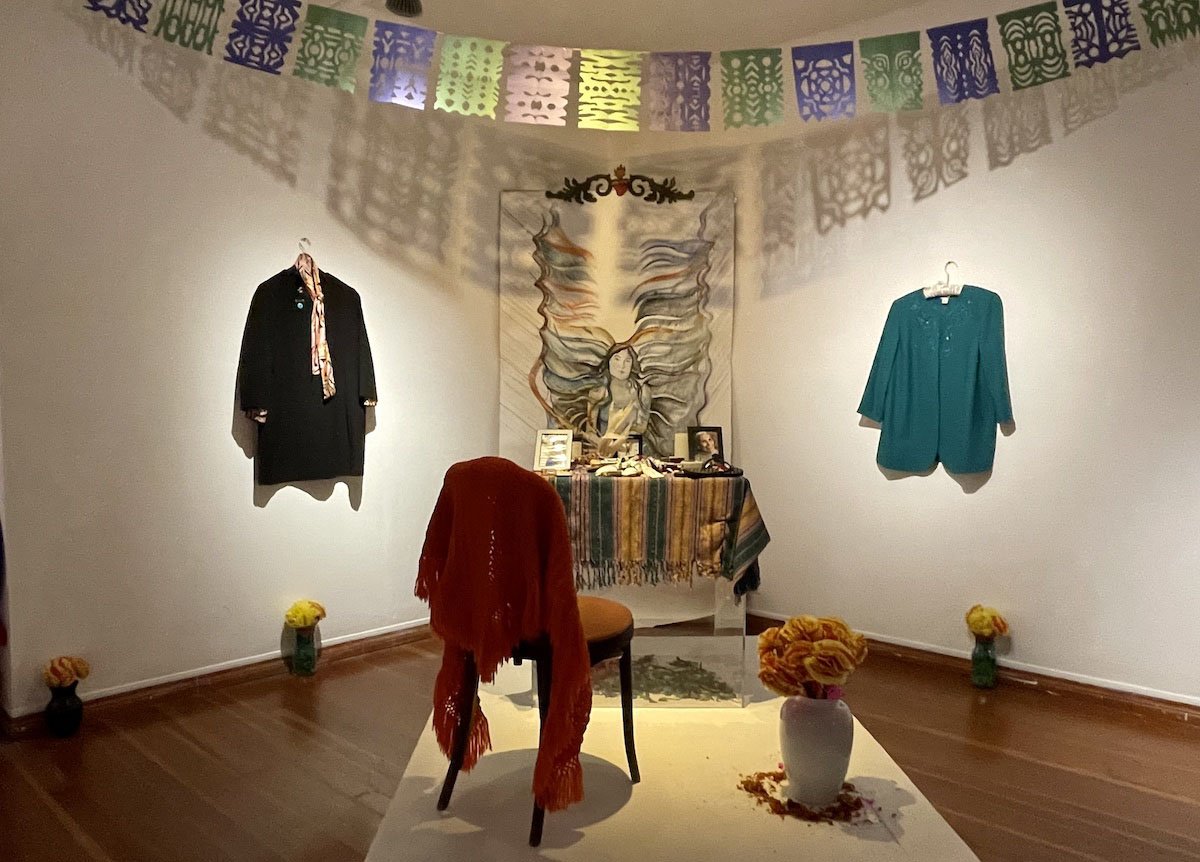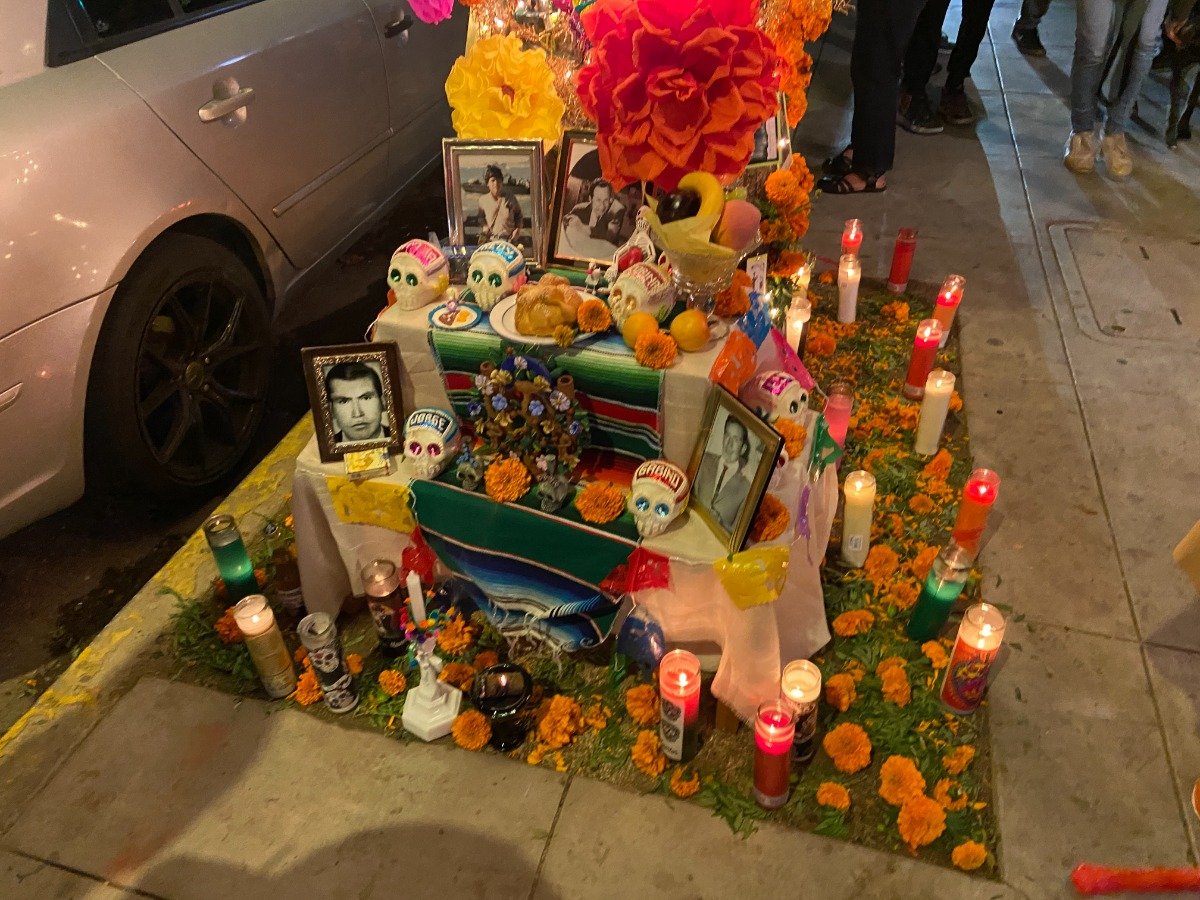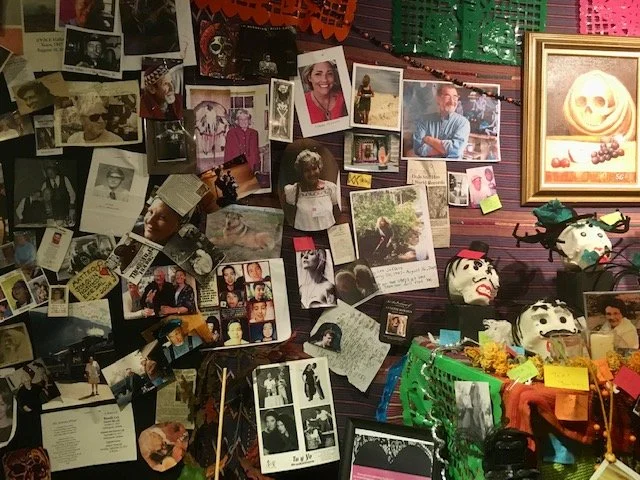a day for grief
I’m picking up my yard, gathering bouquets of stalks and dried flower heads, setting up a table, collecting stones, statues, and photos — all in preparation for tomorrow’s second 7th Avenue Grief Gathering. Inspired by Día de los Muertos, it’s a time to bring community together and bask in the beauty of life while sharing stories of who and what we’ve lost.
Visitors to this ofrenda in the Mission were invited to knit a few rows to add to a scarf to recall a prominent San Francisco poet and activist Jack Hirschman who wore a signature red scarf.
At last year’s gathering, I learned about one friend’s grandmother’s Native American roots, which she didn’t share with family members until much later in life. So many stories and truth were lost out of fear of discrimination, which is part of my friend’s story of loss. Another person put a little toy-sized bathtub — an offering — on our communal altar, a symbol of the baths she can no longer take due to medical procedures. It was one small and playful object, but it symbolized how her body had changed and a pleasure she’s lost. Another person shared the sadness of having to give up farm land. Someone with deep ties to Haiti was in sorrow over the onslaught of tragedies there.
We each wrote down and put into a vase a part of ourselves not seen or recognized in the world - a quiet grief that many of us carry in shame and guilt. We spoke aloud a grief we hold for the world.
An ofrenda.
Along the way, stories surfaced. Memories of those who have passed that we hadn’t had a chance to speak aloud in ages. Someone started us in song and we all joined in, while sipping sweet sweet chai. Which is the point of communal gatherings focused on grief — there is bitterness and sweetness all mixed in.
An altar for artist Yolanda Lopez.
The first time I ever saw ofrendas, the temporal altars created for Día de los Muertos, was in the Mission in San Francisco. The neighborhood has a strong Latinx past, anchored by the Mission Dolores, which was built in the late 1700s. Although it’s been gentrified in ways that kind of break my heart—no matter how much I love me a croissant from Tartine — there are still old-school taquerias and alleyway murals that give a sense of what this neighborhood was like decades ago. Latinx artists who lived in the then-cheap area started the Día de los Muertos celebration in the 1970s. It’s grown since, taking up blocks with people starting weeks and months advance to prepare their altars. Many ofrendas are focused on individual people. It’s an art-heavy event, so local luminaries who have recently departed, like Yolanda Lopez and Hung Liu, are commemorated. But there are plenty of everyday folk being recalled, including non-Latinx — which is a lovely aspect of the Mission’s celebration. The AIDS epidemic broke open the event with the prevalence of grief embedded in the city at that time meeting this beautiful cultural event, each recognizing the power and need of the other.
A sidewalk ofrenda in the Mission, San Francisco.
The communal ofrenda in Taos, NM.
We all need to grieve, whether our losses are fresh or years away, whether they’re related to a person, an animal, or the earth. We need to remember that we’re not alone in it. Seeing the faces of so many brothers, aunts, sisters, teachers, best friends, great-uncles all having taken leave while each leaving a mark on the hearts of memories makes one feel less alone. It normalizes death and grief in a way that our culture resists.
In 2019 while visiting Taos, my friend Mary and I went to the local Día de los Muertos celebration held in a public space — the lobby-bar of a beloved local hotel. There was music and a dance performance, and plenty of wall space to which one could offer a name, a memory, a photo. One of my favorite parts was that the master of ceremonies the funeral home director, in full face paint as a traditional skull. He added just the right touch of humor, humility, and somberness to the event.
So tomorrow, there will be the sweetness of chai and other kind people. There will be a table on which to gradually build our own short-lived altar. There will be permission to tell stories. Space for memories. And room for the communal act of living.





